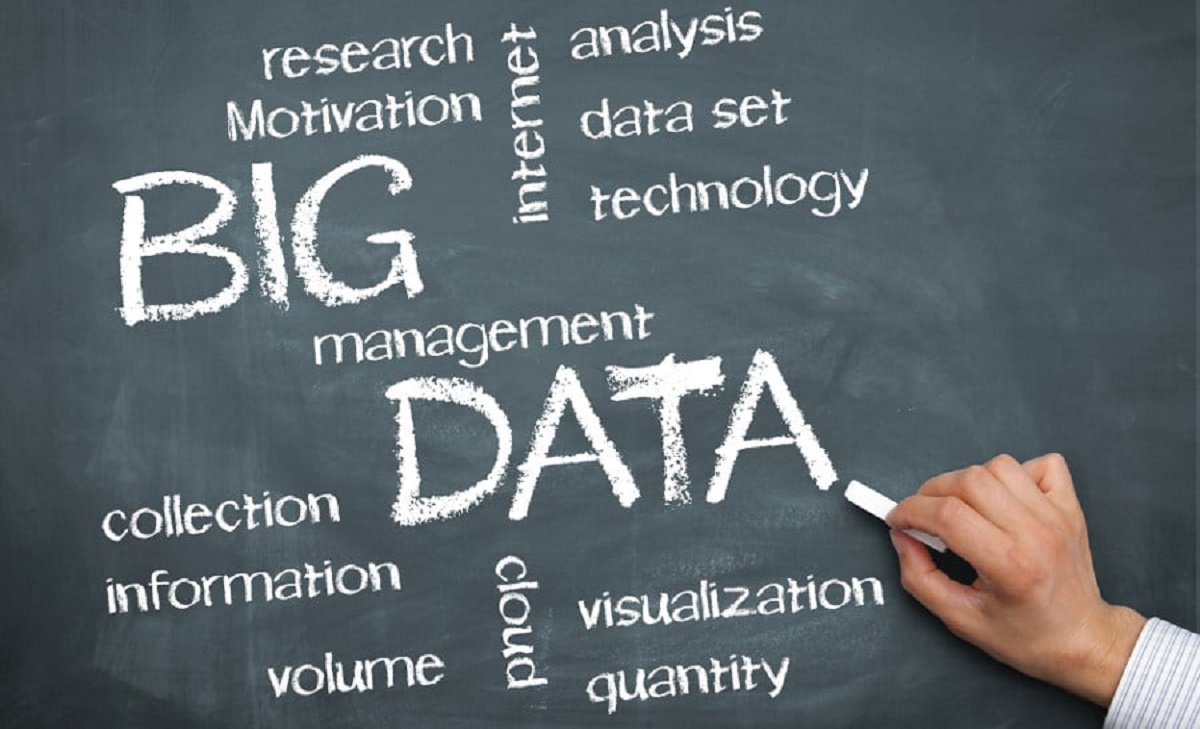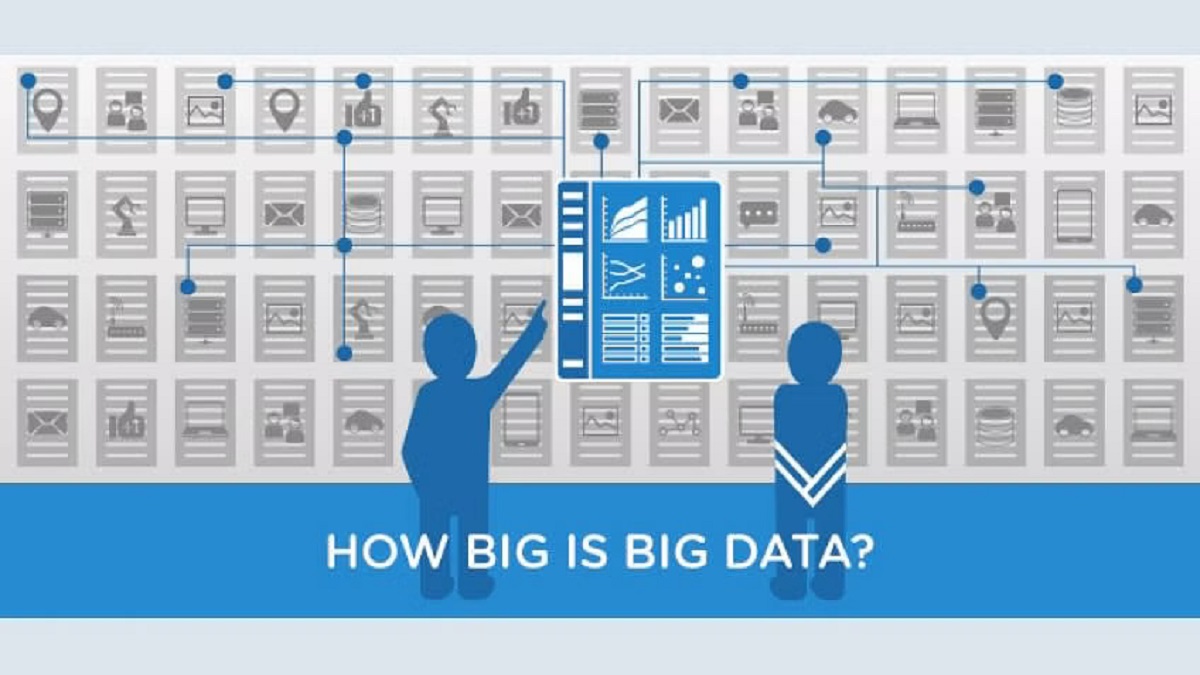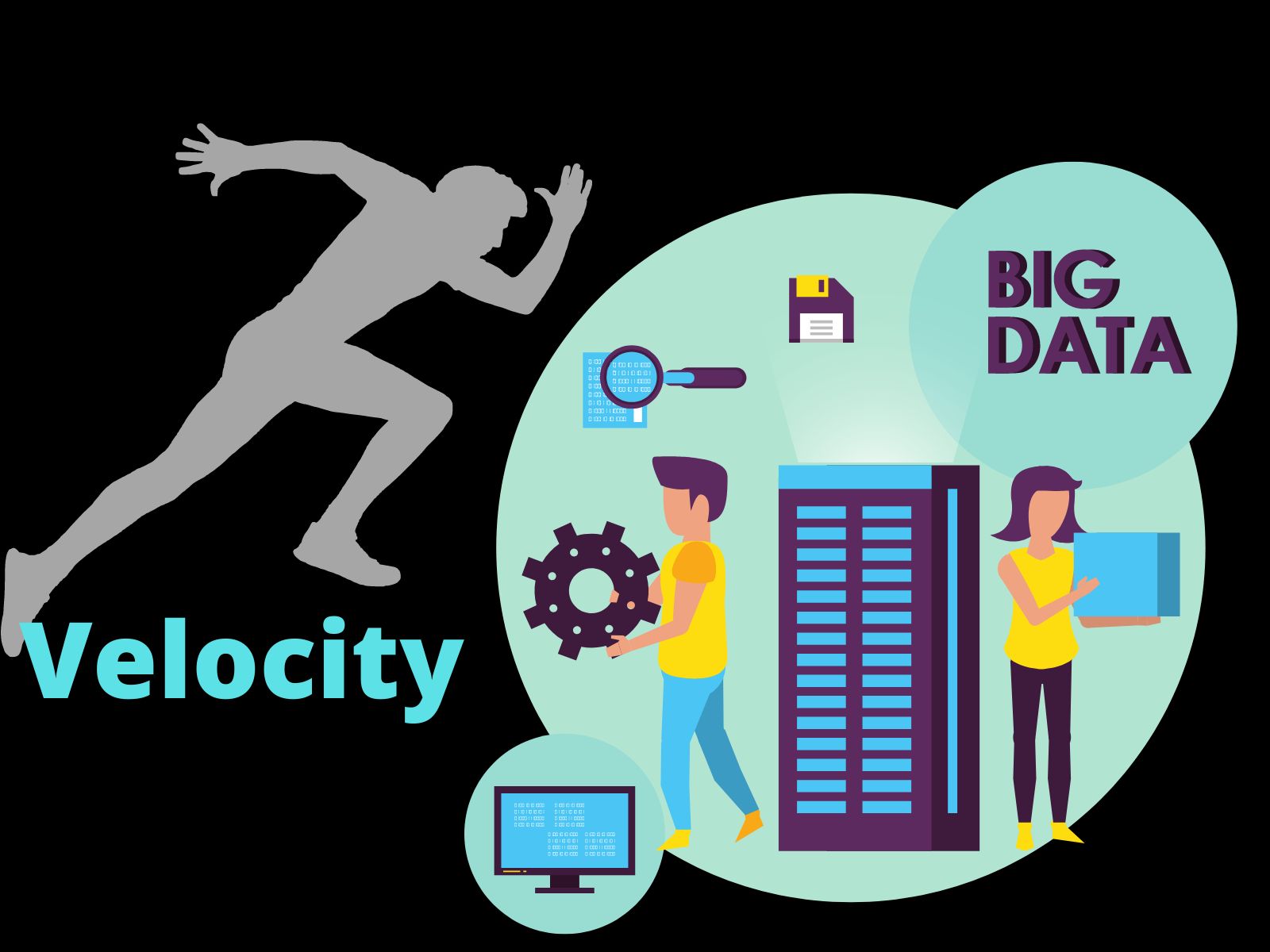Introduction
Big Data has become a ubiquitous term in today’s digital landscape. With the exponential growth in data generation, businesses and organizations are faced with the challenge of capturing, storing, processing, and analyzing vast amounts of data. The advent of the internet, social media, and smart devices has resulted in an unprecedented explosion of data from various sources, including customer interactions, transactions, user behavior, and sensor data, to name a few.
But what exactly is Big Data? In simple terms, it refers to large and complex data sets that cannot be effectively analyzed using traditional data processing methods. These datasets typically involve high volumes, velocity, and variety, often referred to as the three V’s of Big Data. The sheer volume of data, generated in real-time at an incredible speed, from diverse sources such as social media platforms, online transactions, and IoT devices, presents a significant challenge for businesses to extract valuable insights.
The importance of Big Data lies in its potential to unlock valuable insights and drive informed decision-making. Organizations that are able to effectively harness and analyze Big Data gain a competitive edge by uncovering hidden patterns, trends, and correlations that can inform strategic initiatives, enhance operational efficiency, improve customer experiences, and drive innovation.
However, handling Big Data poses numerous challenges. The sheer size and complexity of the data make it difficult to store, process, and analyze using traditional database systems and analytical tools. Additionally, ensuring data security and privacy, addressing ethical considerations, and complying with regulations are also primary concerns when dealing with Big Data.
This article aims to explore the best practices for handling Big Data, including collecting and storing data, processing and analyzing data, visualizing insights, securing data, and addressing ethical considerations. By implementing these best practices, businesses and organizations can effectively leverage Big Data to gain a competitive advantage and drive success in the digital era.
What is Big Data?
Big Data refers to vast and complex datasets that are too large and diverse to be easily managed, processed, and analyzed using traditional data processing techniques. It encompasses data that is characterized by its volume, velocity, and variety, often referred to as the three V’s of Big Data.
The volume of data generated today is unprecedented. With the proliferation of digital platforms, the amount of data being produced is increasing exponentially. This includes data from various sources such as social media, e-commerce transactions, sensors, log files, and more. The sheer volume of Big Data necessitates new approaches and technologies to effectively handle and make sense of it.
The velocity of data refers to the speed at which data is generated and collected. Real-time data streams flow continuously from numerous sources, including social media updates, website interactions, and IoT devices. The ability to process and analyze data in real-time enables organizations to make timely decisions and respond swiftly to changing market conditions.
The variety of data refers to the diverse types and formats of data that organizations encounter. This includes structured data, such as information stored in databases, as well as unstructured data, such as emails, social media posts, images, videos, and more. The challenge lies in integrating and analyzing data from these different sources and formats to derive meaningful insights.
In addition to the three V’s, Big Data is also characterized by the fourth V, which is veracity. Veracity refers to the quality and reliability of the data. Big Data often contains inaccuracies, inconsistencies, and errors, presenting a challenge for organizations to ensure data quality and reliability.
Big Data holds immense value and potential for organizations across industries. By effectively harnessing and analyzing Big Data, businesses can gain valuable insights that can drive informed decision-making, identify market trends, understand customer behavior, optimize operations, and develop innovative products and services.
However, the size, complexity, and dynamic nature of Big Data require organizations to adopt advanced technologies and techniques to handle and process it. This includes distributed computing frameworks like Apache Hadoop, scalable storage solutions such as data lakes, and analytic tools capable of processing large volumes of data in real-time.
In the next sections, we will explore the importance of Big Data and the challenges organizations face in handling it. We will also discuss best practices for collecting and storing Big Data, processing and analyzing it, visualizing insights, securing the data, and addressing ethical considerations.
Why is Big Data important?
Big Data holds significant importance in today’s fast-paced and data-driven world. The ability to collect, process, and analyze large and complex datasets provides valuable insights and numerous benefits for businesses and organizations. Here are some key reasons why Big Data is important:
1. Informed decision-making: Big Data analysis allows organizations to make data-driven decisions by uncovering valuable insights and patterns. By analyzing large volumes of data from diverse sources, businesses can gain a deeper understanding of customer behavior, market trends, and competitive landscapes. This enables them to make informed decisions, develop effective strategies, and adapt quickly to changing market conditions.
2. Improved operational efficiency: Big Data analytics helps optimize business operations and processes. By analyzing data related to supply chain management, production processes, and resource allocation, organizations can identify bottlenecks, inefficiencies, and areas for improvement. This leads to streamlined operations, reduced costs, and improved overall efficiency.
3. Enhanced customer experiences: Big Data analysis enables organizations to gain insights into customer preferences, buying patterns, and satisfaction levels. By understanding customer behavior and preferences, businesses can personalize their offerings, tailor marketing campaigns, and provide a seamless customer experience. This leads to increased customer satisfaction, loyalty, and retention.
4. Innovation and product development: Big Data provides valuable insights for innovation and product development. By analyzing customer feedback, market trends, and competitive intelligence, organizations can identify new opportunities, emerging trends, and areas for innovation. This enables them to develop new products and services that meet evolving customer needs and stay ahead of the competition.
5. Fraud detection and risk management: Big Data analytics plays a crucial role in fraud detection and risk management. By analyzing vast amounts of transactional data, organizations can identify suspicious patterns, anomalies, and fraudulent activities in real-time. This helps prevent financial losses, minimize risks, and ensure the security of sensitive data.
6. Scientific research and discoveries: Big Data analysis has revolutionized scientific research across various disciplines. Researchers can analyze large datasets, such as genomic data, climate data, and social media data, to gain insights and make breakthrough discoveries. Big Data enables scientists to accelerate research processes, make connections, and uncover new insights that can drive innovation and advancements.
7. Business competitiveness: In today’s competitive landscape, organizations that can effectively harness Big Data gain a significant competitive advantage. By utilizing data analytics to gain insights into customer behavior, market trends, and operational efficiency, businesses can stay ahead of the competition, identify new growth opportunities, and make data-driven decisions that drive success.
Overall, Big Data plays a critical role in unlocking valuable insights, driving innovation, improving operational efficiency, enhancing customer experiences, and enabling informed decision-making for organizations across various industries. By effectively collecting, processing, and analyzing Big Data, businesses can gain a strategic edge and thrive in the digital era.
Challenges in Handling Big Data
Handling Big Data presents several challenges for organizations due to its sheer volume, velocity, variety, and veracity. Here are some of the key challenges faced when dealing with Big Data:
1. Data storage and management: The sheer volume of Big Data makes it challenging to store and manage effectively. Traditional storage systems may not be equipped to handle the enormous amounts of data generated in real-time. Organizations need scalable storage solutions, such as data lakes or cloud-based storage, to store and retrieve data efficiently.
2. Data integration: Big Data often comes from various sources in multiple formats, including structured and unstructured data. Integrating data from different sources and formats is complex and time-consuming. Data integration challenges include data cleaning, data transformation, and ensuring data consistency across different systems.
3. Data quality: Veracity is a crucial aspect of Big Data, and ensuring data quality presents a significant challenge. Big Data can contain errors, inconsistencies, and inaccuracies that impact the analysis and decision-making process. Organizations need robust data quality management strategies to identify and rectify data quality issues.
4. Data processing and analysis: The volume, velocity, and variety of Big Data make it difficult to process and analyze using traditional methods. Processing large datasets in real-time requires distributed computing frameworks like Apache Hadoop and Apache Spark. Advanced analytics techniques, such as machine learning and artificial intelligence, are also employed to extract valuable insights from Big Data.
5. Security and privacy: Big Data often contains sensitive and confidential information, making data security and privacy crucial concerns. Organizations must implement robust cybersecurity measures to protect data from unauthorized access, breaches, and cyber threats. They must also adhere to data protection regulations and ensure compliance with privacy laws.
6. Skills and expertise: Handling Big Data requires a specific skill set and expertise. Data scientists and data analysts who possess knowledge of advanced analytics techniques, programming languages, and statistical modeling are in high demand. Building and retaining a skilled data team can be a challenge for organizations.
7. Cost: The infrastructure, tools, and technologies required to handle Big Data can be expensive. Building scalable storage systems, implementing distributed computing frameworks, and training data professionals involve significant costs. Organizations must carefully budget and allocate resources to overcome the financial challenge of handling Big Data.
8. Ethical considerations: Ethical considerations arise when dealing with Big Data, especially when handling personal information. Organizations must ensure they have proper consent and adhere to privacy regulations when collecting and processing Big Data. Transparency, fairness, and accountability are vital in maintaining trust and ethical use of Big Data.
Overcoming these challenges in handling Big Data requires a strategic and holistic approach. Organizations need to invest in advanced technologies, hire skilled professionals, implement robust security measures, and establish data governance frameworks to ensure data quality, privacy, and compliance. By addressing these challenges, businesses can unlock the full potential of Big Data and derive valuable insights to drive their success.
Best Practices for Handling Big Data
Handling Big Data effectively requires adopting best practices that enable organizations to collect, store, process, analyze, and derive insights from large and complex datasets. Here are some key best practices for handling Big Data:
1. Define clear goals and objectives: Before embarking on a Big Data initiative, organizations should clearly define their goals and objectives. What insights do they hope to gain? What business problems do they aim to solve? Clear goals help guide the data collection, processing, and analysis efforts towards meaningful outcomes.
2. Data governance and quality management: Establishing a data governance framework ensures that data is managed, protected, and used in a responsible manner. Clear data ownership, data quality standards, and data lifecycle management policies should be defined to maintain data integrity and reliability.
3. Scalable data storage: Implementing scalable data storage solutions, such as data lakes or cloud-based storage, allows organizations to efficiently store and manage large volumes of data. Choosing appropriate storage options based on the organization’s needs and considering factors like data access, security, and cost are crucial.
4. Distributed computing frameworks: Utilize distributed computing frameworks like Apache Hadoop and Apache Spark to process and analyze Big Data. These frameworks enable parallel processing across multiple nodes, allowing for faster and more efficient data processing.
5. Data preprocessing and cleaning: Before analysis, preprocess and clean the data to ensure its quality. Data preprocessing techniques like data cleaning, data transformation, and handling missing values help improve the accuracy and reliability of the analysis results.
6. Advanced analytics techniques: Employ advanced analytics techniques, such as machine learning, predictive modeling, and natural language processing, to derive valuable insights from Big Data. These techniques enable organizations to uncover patterns, make predictions, and gain deeper understanding from complex datasets.
7. Data visualization: Visualize Big Data insights using interactive and intuitive data visualization tools. Communicating data findings through visual representations makes it easier for stakeholders to understand and interpret the insights, facilitating better decision-making.
8. Data security and privacy: Implement robust security measures to protect Big Data from unauthorized access and breaches. Encryption, access controls, and regular security audits should be in place. Comply with data privacy regulations and ensure that data is handled and used ethically.
9. Continuous learning and improvement: Emphasize a culture of continuous learning and improvement in the organization’s approach to handling Big Data. Encourage teams to stay updated with the latest technologies, participate in training programs, and share best practices to enhance their skills and knowledge.
10. Collaboration and cross-functional teams: Foster collaboration between data professionals, business analysts, and domain experts to ensure that Big Data initiatives align with the organization’s strategic goals. Cross-functional teams can provide diverse perspectives and domain expertise, leading to more comprehensive and impactful insights.
By following these best practices, organizations can maximize the value and impact of Big Data. Effective handling of Big Data enables businesses to gain competitive advantages, improve decision-making, enhance operational efficiency, and drive innovation in this data-driven era.
Collecting and Storing Big Data
Collecting and storing Big Data effectively is a crucial step in the journey of harnessing its potential for organizations. With the vast amount of data being generated from various sources, it is essential to have a well-defined strategy for data collection and storage. Here are some best practices for collecting and storing Big Data:
1. Identify relevant data sources: Start by identifying and understanding the data sources that are relevant to your business objectives. Determine what types of data are needed to drive insights and make informed decisions. This could include transactional data, customer interactions, social media data, sensor data, or any other data sources specific to your industry or organization.
2. Implement data capture mechanisms: Put in place mechanisms to capture the identified data sources effectively. This could involve integrating with APIs, setting up data connectors, or implementing data ingestion processes to collect data in real-time or batch processing.
3. Ensure data quality: Maintain data quality by implementing data validation and cleansing processes. Data validation helps to ensure that the collected data meets certain quality standards, while data cleansing involves removing or correcting any inaccuracies or inconsistencies in the data. This ensures the reliability and accuracy of the data stored.
4. Use scalable storage solutions: Utilize scalable storage solutions capable of handling the volume and velocity of Big Data. Options such as data lakes, distributed file systems, or cloud storage services provide the flexibility and scalability needed to store large amounts of data without compromising performance.
5. Utilize data compression techniques: Compressing data can help reduce storage requirements and optimize storage resources. Implement compression techniques such as gzip, Snappy, or zlib to efficiently store and retrieve Big Data while minimizing storage costs.
6. Employ data partitioning: Partitioning data into smaller, manageable units allows for efficient storage and retrieval of specific subsets of data. Partitioning can be done based on different criteria, such as time intervals, geographic regions, or customer segments, depending on the specific needs of the data analysis and workflows.
7. Ensure data security: Implement robust security measures to protect the stored Big Data from unauthorized access, breaches, and cyber threats. This includes implementing access controls, encryption techniques, and regular security audits to ensure data confidentiality, integrity, and availability.
8. Backup and disaster recovery: Establish a robust backup and disaster recovery strategy to minimize the risk of data loss and ensure business continuity. Regularly backup the stored Big Data to off-site or cloud storage systems, and test the recovery process to ensure data can be restored efficiently in case of any unforeseen incidents.
9. Metadata management: Implement proper metadata management to provide context and meaning to the stored data. Metadata helps in understanding the structure, format, and relationships of the Big Data, making it easier to discover, access, and analyze relevant data for various use cases.
10. Compliance with data regulations: Ensure compliance with data protection and privacy regulations, such as GDPR (General Data Protection Regulation) or CCPA (California Consumer Privacy Act). Adhere to legal requirements related to data collection, storage, retention, and usage, and obtain proper consent when necessary.
By following these best practices, organizations can effectively collect and store Big Data, setting the foundation for further processing, analysis, and deriving valuable insights. Proper data collection and storage of Big Data enable businesses to leverage the wealth of information available and make data-driven decisions that drive their success.
Processing Big Data
Processing Big Data involves efficiently managing and analyzing large and complex datasets to derive meaningful insights. Traditional data processing techniques and tools are often insufficient for handling the volume, velocity, and variety of Big Data. Here are some best practices for processing Big Data:
1. Utilize distributed computing frameworks: Distributed computing frameworks like Apache Hadoop and Apache Spark allow for parallel processing of Big Data across multiple nodes. These frameworks divide the data and workload into smaller tasks, distributing them to different nodes for faster processing and analysis.
2. Implement data partitioning and parallelization: Partitioning Big Data into smaller subsets based on specific criteria, such as time, geographic location, or customer segments, allows for parallel processing. It enables different nodes to process different partitions simultaneously, significantly improving processing times and efficiency.
3. Explore in-memory processing: In-memory computing technologies such as Apache Ignite or Apache Flink can be used to store and process data in memory, reducing disk I/O and improving processing speeds. These technologies enable real-time analysis of streaming data and faster access to frequently queried data.
4. Leverage cloud-based processing: Cloud platforms offer scalable and on-demand processing capabilities for Big Data. By leveraging cloud services like Amazon Web Services (AWS), Google Cloud Platform (GCP), or Microsoft Azure, organizations can access high-performance computing resources without the need for extensive infrastructure management.
5. Use advanced analytics techniques: Apply advanced analytics techniques, such as machine learning, natural language processing, or predictive modeling, to derive insights from Big Data. These techniques can help uncover patterns, trends, and correlations within the data that may not be readily apparent through traditional analysis.
6. Implement real-time processing: Real-time processing enables organizations to analyze streaming data in near real-time. Technologies such as Apache Kafka or Apache Storm can be used to process and analyze data as it is generated, allowing for timely decision-making, immediate response to events, and faster insights extraction.
7. Use data preprocessing techniques: Preprocess and clean the data before analysis to ensure its quality and reliability. Data preprocessing techniques, such as data cleaning, data transformation, and outlier detection, help ensure accurate and meaningful analysis results.
8. Employ data virtualization: Data virtualization technology enables organizations to access and analyze data from multiple sources without the need for data replication or consolidation. It provides a unified view of the data, simplifying data access and analysis across different systems and data repositories.
9. Explore data stream processing: Data stream processing frameworks like Apache Flink or Apache Kafka Streams are designed to handle continuous streams of data in real-time. They enable organizations to process and analyze data as it arrives, making it ideal for real-time analytics and event-driven applications.
10. Monitor and optimize processing performance: Continuously monitor the performance of data processing workflows and applications. Optimize processing algorithms, fine-tune hardware configurations, and leverage caching techniques to improve processing speeds and efficiency.
By implementing these best practices, organizations can overcome the challenges of processing Big Data. Efficient and effective processing of Big Data allows businesses to uncover valuable insights, make data-driven decisions, and derive meaningful outcomes from their data assets.
Analyzing Big Data
Analyzing Big Data involves extracting insights and meaningful patterns from large and complex datasets to drive informed decision-making. With the sheer volume, velocity, and variety of Big Data, traditional data analysis techniques may not be sufficient. Here are some best practices for analyzing Big Data:
1. Define clear analysis objectives: Clearly define the objectives and goals of the analysis to ensure that it aligns with the organization’s strategic priorities. Identify specific questions to be answered or problems to be solved, which will direct the analysis process and focus on the most relevant aspects of the data.
2. Utilize advanced analytics techniques: Advanced analytics techniques such as machine learning, predictive modeling, and natural language processing can uncover meaningful insights from Big Data. These techniques enable organizations to uncover hidden patterns, trends, and correlations that may not be apparent through traditional analysis approaches.
3. Implement exploratory data analysis: Conduct exploratory data analysis to gain a deeper understanding of the data. Through summary statistics, data visualization, and interactive dashboards, organizations can identify outliers, trends, and patterns that may influence the analysis process. Exploratory data analysis helps to guide subsequent analyses and provide initial insights into the data.
4. Leverage data mining techniques: Data mining techniques help identify patterns, relationships, and dependencies in Big Data. By employing methods such as clustering, association analysis, and classification, organizations can uncover valuable patterns and insights that can drive decision-making and strategic planning.
5. Develop scalable algorithms: Design and develop scalable algorithms capable of handling the volume and velocity of Big Data. Consider distributed computing frameworks like Apache Spark and parallel processing techniques to achieve faster analysis results and handle large datasets efficiently.
6. Combine multiple data sources: Integrate and analyze data from multiple sources to gain a comprehensive view. Combining structured and unstructured data sources, such as social media data, customer feedback, and transactional data, provides a holistic view that can lead to more accurate and insightful analysis.
7. Visualize analysis results: Use data visualization techniques to present analysis results in a clear and understandable manner. Visualizations help stakeholders quickly grasp the insights derived from Big Data, enabling better decision-making and communication of findings.
8. Continuously validate and refine analysis: Apply statistical validation techniques to ensure the reliability and accuracy of the analysis results. Perform sensitivity analysis, test hypotheses, and reevaluate models as new data becomes available. This iterative process helps refine the analysis and improve the quality of insights generated.
9. Foster collaboration and cross-functional teams: Encourage collaboration between data analysts, domain experts, and business stakeholders. By leveraging the expertise of different team members, organizations can gain diverse perspectives and insights, leading to more comprehensive and meaningful analysis outcomes.
10. Stay updated with emerging trends: Keep up with emerging technologies and trends in Big Data analysis. Stay informed about new data analysis techniques, tools, and methodologies to ensure continuous improvement in analyzing Big Data effectively and efficiently.
By following these best practices, organizations can extract valuable insights from Big Data and make data-driven decisions that have a significant impact on their business strategies and operations.
Visualizing Big Data
Visualizing Big Data involves presenting complex and voluminous datasets in a visually appealing and understandable format. Visualization plays a crucial role in conveying insights, patterns, and trends that may be difficult to comprehend through raw data alone. Here are some best practices for visualizing Big Data:
1. Choose the right visualization techniques: Select visualization techniques that effectively represent the nature of the data and the intended message. Bar charts, line graphs, scatter plots, heatmaps, treemaps, and network diagrams are just a few examples of visualization options available. Consider the specific characteristics of the Big Data and the insights to be conveyed when choosing visualization techniques.
2. Simplify complex data: Big Data is often complex and multidimensional. Simplify the data by focusing on the key variables and attributes that are most relevant to the analysis and visualization goals. This helps to reduce visual clutter and allows viewers to focus on the most important insights.
3. Use interactive visualizations: Enable interactivity in visualizations to empower users to explore and interact with the data. Interactive elements such as zooming, filtering, and drill-down capabilities allow users to delve deeper into the data, discover additional patterns, and customize the visualizations according to their specific interests or needs.
4. Utilize color effectively: Choose a color palette that enhances the clarity and readability of the visualizations. Use color strategically to highlight specific data points, groupings, or trends. Ensure that the color scheme is accessible for individuals with visual impairments and take into account cultural interpretations of colors.
5. Incorporate visual storytelling: Tell a compelling story with the visualizations. Use annotations, titles, and captions to provide context, explain the insights being presented, and guide the interpretation of the data. Incorporate narrative elements that engage and capture the viewer’s attention, helping them understand the significance of the visualized information.
6. Consider scalability: Big Data often involves large datasets that may exceed the screen or page dimensions. Use techniques like data aggregation, sampling, or summary statistics to handle scalability challenges. Additionally, consider using interactive zooming and filtering to focus on specific areas of interest within the data.
7. Integrate multiple data sources: Integrate data from multiple sources to provide a holistic view of the insights. Combine structured and unstructured data, geospatial data, or temporal data to create visualizations that incorporate multiple dimensions and provide comprehensive insights.
8. Balance aesthetics and functionality: Strive for a balance between aesthetic appeal and functional clarity in the visualizations. While visually appealing designs captivate viewers, the visuals should also effectively communicate the intended messages and insights in a clear and concise manner.
9. Test and gather feedback: Test the visualizations with representative users to ensure they convey the desired insights effectively. Gather feedback from stakeholders and users to identify areas for improvement or adjustments in the design, interaction, or overall effectiveness of the visualizations.
10. Stay informed about visualization trends: Continuously explore emerging trends and advancements in data visualization techniques and tools. Stay updated with new visualization libraries, technologies, and design principles to enhance the visual representation of Big Data and leverage the latest innovations in visualization space.
By following these best practices, organizations can effectively communicate and uncover insights from Big Data through visually compelling and informative visualizations. Visualization brings data to life, allowing stakeholders to understand complex information quickly and make data-driven decisions based on the insights derived.
Securing Big Data
Securing Big Data is essential to protect sensitive information, maintain data integrity, and ensure compliance with data protection regulations. With the increasingly large and diverse datasets involved in Big Data, organizations must implement robust security measures. Here are some best practices for securing Big Data:
1. Data encryption: Apply encryption techniques to protect data at rest, in transit, and during processing. Encryption helps safeguard sensitive information from unauthorized access or disclosure, ensuring that data remains secure even if it is accessed or intercepted by threat actors.
2. Access controls: Implement strong access controls to ensure that only authorized individuals can access and modify data. Role-based access control (RBAC) and user authentication mechanisms, such as multi-factor authentication, help prevent unauthorized access to Big Data repositories and sensitive information.
3. Data anonymization: Anonymize or pseudonymize personal data within Big Data to protect individual privacy. This involves removing or encrypting personally identifiable information (PII) so that it cannot be linked back to specific individuals. Data masking, tokenization, or generalization techniques can be used to preserve data utility while maintaining privacy.
4. Regular security audits: Conduct regular security audits to identify vulnerabilities or weaknesses in the security infrastructure. Regular security assessments help organizations proactively address security gaps and ensure that security controls and technologies remain up to date and effective in protecting Big Data.
5. Data leakage prevention: Implement measures to prevent data leakage or unauthorized data transfers. This includes implementing network monitoring tools, data loss prevention (DLP) solutions, and user behavior analytics to detect and prevent potential data breaches or unauthorized data exfiltration attempts.
6. Secure data sharing: When sharing Big Data with external partners or stakeholders, establish secure data sharing agreements and protocols. Implement data security measures, such as secure file transfer protocols (SFTP), virtual private networks (VPNs), or secure APIs, to ensure that data is exchanged securely and the privacy of sensitive information is maintained.
7. Data backup and disaster recovery: Regularly backup Big Data and develop a robust disaster recovery plan. Data backups help protect against data loss due to hardware failures, natural disasters, or cyber incidents. Regularly test the recovery process to ensure the successful restoration of data in case of any disruptions.
8. Employee training and awareness: Educate employees about data security best practices and their role in protecting Big Data. Provide training sessions on data handling procedures, security protocols, and data privacy regulations. Encourage employees to remain vigilant and report any potential security incidents or data breaches.
9. Threat detection and incident response: Deploy advanced threat detection and security monitoring systems to identify and respond to potential security incidents. Implement intrusion detection systems (IDS), security information and event management (SIEM) systems, and real-time monitoring tools to detect and respond promptly to security threats.
10. Compliance with regulations: Ensure compliance with relevant data protection regulations such as GDPR, CCPA, or HIPAA. Stay informed about the legal and regulatory requirements regarding the collection, storage, processing, and protection of Big Data. Regularly review and update security practices to align with evolving compliance standards.
By following these best practices, organizations can enhance the security of their Big Data and mitigate the risks associated with data breaches, unauthorized access, or data leakage. Prioritizing data security protects sensitive information, preserves data integrity, and builds trust with stakeholders and customers.
Ethical Considerations in Handling Big Data
Handling Big Data comes with ethical responsibilities to ensure that data is collected, processed, and used in an ethical and responsible manner. Here are some key ethical considerations that organizations need to address when dealing with Big Data:
1. Data privacy: Respecting individuals’ privacy is crucial when handling Big Data. Organizations must ensure that data collection, storage, and processing comply with applicable data protection regulations. Obtain proper consent, anonymize or pseudonymize personal data, and implement policies and practices that prioritize individual privacy.
2. Data transparency: Transparency in data collection and usage builds trust with individuals and stakeholders. Organizations should clearly communicate the purpose of data collection, the types of data collected, and how it will be used. Transparent practices foster accountability and help individuals understand how their data is used to make informed decisions.
3. Data accuracy and integrity: Ensuring the accuracy and integrity of Big Data is essential. Organizations must take measures to verify the quality of data and regularly update and maintain data to prevent inaccuracies or biases. Misleading or inaccurate data can lead to incorrect insights and decisions with potential negative consequences.
4. Bias in data analysis: Bias can be inadvertently introduced during the collection, processing, and analysis of Big Data. Organizations need to be aware of potential biases, such as sample bias or algorithmic bias, and mitigate them. Regularly assess and audit algorithms for fairness and bias and address any identified biases to prevent discriminatory outcomes.
5. Informed consent: Obtaining informed consent is crucial when collecting and using personal data. Individuals should be aware of how their data will be used, who it will be shared with, and have the choice to opt-out if desired. Providing clear and understandable consent options ensures that individuals have control over their data and are empowered to make informed decisions.
6. Data governance and accountability: Establish clear data governance frameworks that define roles, responsibilities, and processes for handling Big Data ethically. Assign accountability for data handling and ensure that teams and individuals are aware of and adhere to ethical guidelines, policies, and procedures.
7. Data security: Protecting the security of Big Data is not only a legal and regulatory requirement but also an ethical responsibility. Safeguarding data from unauthorized access, breaches, or misuse demonstrates a commitment to protecting individuals’ personal information and maintaining their trust.
8. Benefit analysis and societal impact: Assess the potential benefits and impact of Big Data initiatives on society as a whole. Consider the implications of data collection and analysis on individuals, communities, and public interests. Strive to balance the benefits of Big Data insights against potential risks to privacy, fairness, and social well-being.
9. Data sharing and collaboration: When sharing data with external partners or entities, ensure that ethical considerations are extended to those collaborations. Encourage ethical practices in data sharing, respect data ownership and privacy rights, and establish clear agreements that align with ethical standards and protect the interests of all parties involved.
10. Continuous monitoring and improvement: Regularly monitor and assess the ethical aspects of Big Data initiatives. Stay informed about evolving ethical standards and guidelines, seek feedback from stakeholders, and continuously improve practices to ensure that data handling aligns with ethical considerations.
By addressing these ethical considerations, organizations can ensure that Big Data is handled responsibly, respecting individual privacy, maintaining data integrity, and making ethical decisions that benefit both the organization and society as a whole.
Conclusion
Big Data has become an integral part of modern businesses and organizations, offering immense opportunities for growth, innovation, and informed decision-making. However, handling Big Data comes with its share of challenges and ethical considerations that must be addressed to maximize its potential while safeguarding privacy and ensuring data integrity.
Throughout this article, we have explored various aspects of handling Big Data, from understanding its definition and importance to overcoming the challenges associated with collecting, storing, processing, analyzing, and visualizing large and complex datasets. Best practices have been highlighted to guide organizations in effectively harnessing the power of Big Data in their operations and strategies.
Collecting and storing Big Data requires a well-defined strategy, scalable storage solutions, and robust data governance practices. The processing of Big Data involves leveraging distributed computing frameworks, advanced analytics techniques, and efficient data preprocessing to derive meaningful insights. Visualizing Big Data enhances understanding and communication through effective representation and storytelling. Securing Big Data is essential to protect sensitive information and maintain data integrity, alongside addressing ethical considerations regarding privacy, transparency, and fairness.
By following these best practices and considering the ethical implications, organizations can leverage the potential of Big Data to gain a competitive edge, drive innovation, enhance decision-making, and improve operational efficiency. It is vital for organizations to continuously monitor and adapt their approaches as technology and data landscapes evolve, staying updated with emerging trends and regulations.
In conclusion, the effective handling of Big Data requires a comprehensive and holistic approach. By adopting the best practices outlined in this article and considering the ethical considerations involved, organizations can unlock the true value of Big Data and navigate the challenges associated with it successfully.

























